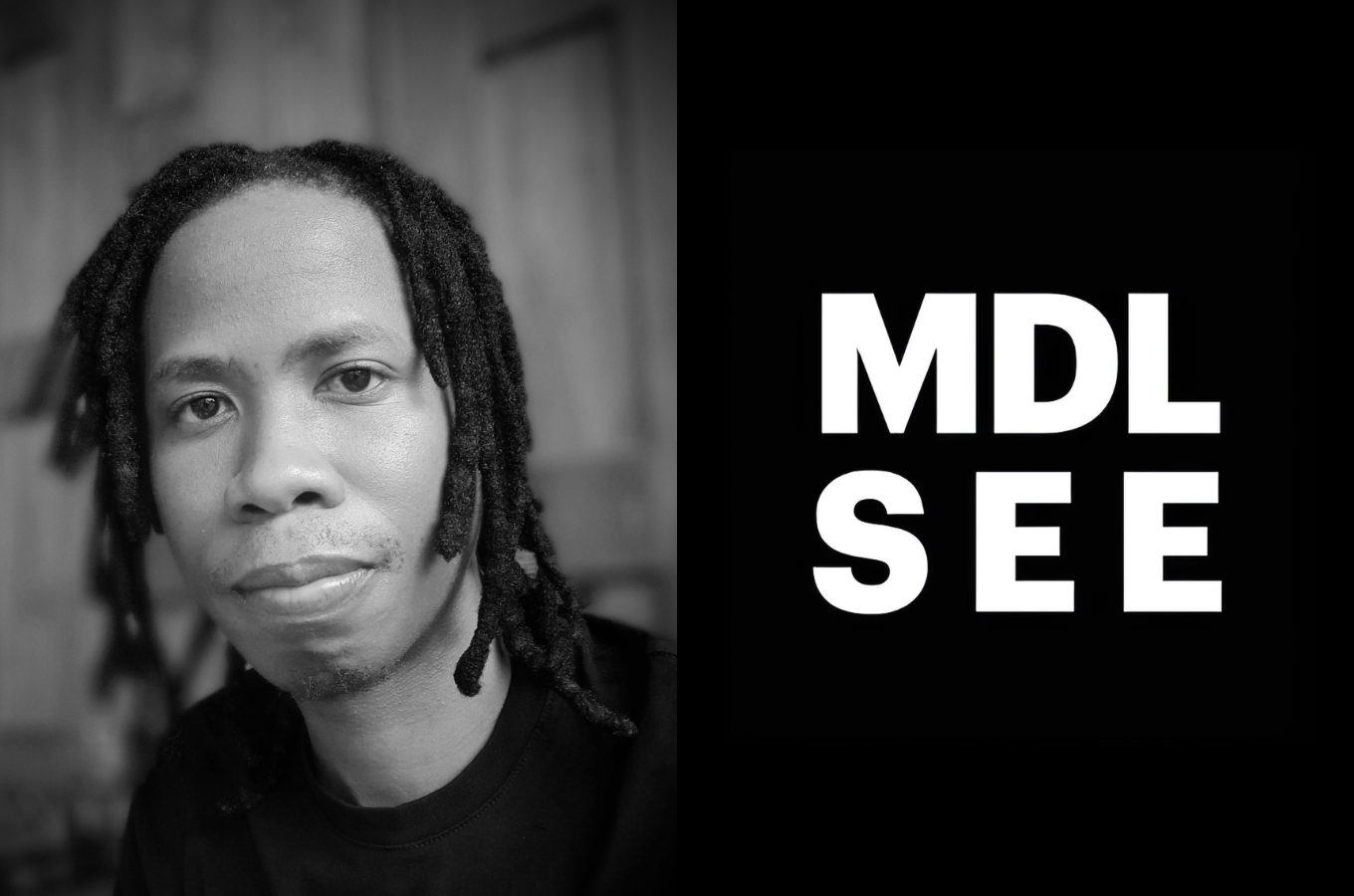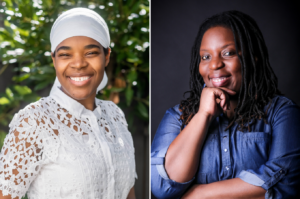
We interviewed award-winning South African writer Masande Ntshanga, founder of MODEL SEE MEDIA (MDL SEE). Formed in 2020, MDL SEE has been publishing novel, experimental writings with small print runs. Featuring work by Esinako Ndabeni and Kharys Ateh Laue, MDL SEE’s publications are distributed both locally and internationally. In this interview, Ntshanga talks about MDL SEE’s innovative publishing model and a commitment to making a home for boundary-pushing art.
***
Brittle Paper
You describe MDL SEE as “a public sphere intervention and the world’s first pop-up publisher of experimental literature, art and code.” That’s a great description. I’d love to hear more about how this project is different from other publishers. What inspired this project and who else is involved?
Masande Ntshanga
Thank you. I would say it differs from other publishers in that it’s experimental in essence. Not only are the books MDL SEE releases experimental in one capacity or the other, but the press itself is an experiment. For a short stint, I was an amateur hacker in high-school, and of late, I’ve come to think of MDL SEE more and more in those terms – as a form of hacking. For example, if publishing could be seen as an operating system and other presses as applications – either built by corporations or independent developers – then MDL SEE’s place would be that of the computer virus, the Trojan horse, a rogue program whose aim is to smuggle in subversive data to the mainframe.
It’s a pop-up in the sense that it doesn’t have a schedule it adheres to. Instead, the device goes into hibernation until the right project and collaborator come along. Regarding the rest, our future projects are set to include the publication of visual art, code and other media.
MDL SEE also differs in that it doesn’t consider the market when it comes to making decisions about its catalogue. It considers the work itself, first and foremost, and “intervenes” in the sense that it takes on texts that might otherwise go unpublished in their current form, where the writers are free to make bold decisions regarding every aspect of the process, from the art selection to the layout. Having taken on the work, MDL SEE is then tasked with doing several things. Namely, to introduce the text to the reading public, to have it engage with non-profit organisations aligned with its themes, and finally, to have it catalogued, contributing to an archive of knowledge production that originates from outside commercial and academic contexts.
In terms of inspiration, the idea for the press came from my experiences as an author inside traditional publishing. My second publication, Triangulum, was published in the spring of 2019, a couple of months before the first COVID-19 lockdown. I’d conceived of the book in 2016, while on tour for my first novel, and then spent the next two years working on the manuscript. It became larger than I’d expected in the end; multi-modal, and involving three different editors: one in South Africa, one in the United States, and one in the United Kingdom. I got to learn a lot about the different mechanisms that inform the functioning of a press, and I became curious as to what would happen if certain compromises were removed in favour of the writer. For example, the deadlines, the targeted marketing, and the demarcation of duties between the different departments – such as editorial and production. It was a thought experiment that turned practical during the idleness of the pandemic, and to execute it, I knew I would have to go smaller in scale, which is why I chose to work with chapbooks, soon discovering that they were the perfect combination of agile and potent. The idea was to create a playground for writers to express themselves in without any restraints, their concerns focused mainly on making a book that felt perfect to them.
For now, I’m the only person involved in the project on a permanent basis – although I view the writers I work with more as collaborators than artists on a roster. I taught myself how to lay the books out using open-source software during lockdown. I also taught myself how to distribute and catalogue them. To design, edit and act as a publicist. That said, I’m thinking of expanding and having two different headquarters – one in Johannesburg and one in Bristol, where I now live – which will require more hands.
Brittle Paper
I notice from the press releases of your three published books that the proceeds from each of these goes to a different cause like racial justice, environmental conservation, women’s rights, animal rights, indigenous organizations. Could you say more about this financial model?
Masande Ntshanga
It’s non-profit. Meaning the writers receive 100 percent of their proceeds and then decide on whether or not they want to share them with organisations that advocate for causes that are close to them. They also decide how much they want to contribute. This stems from a belief that literature is cultural work that’s capable of affecting society both through discourse and action. In terms of a financial model, MDL SEE sees the problem of money, vis-à-vis artists and writers, as an opportunity for sharing as well as for creative and communal solutions. Like a stokvel of sorts. In this way, it’s twofold. Money is first raised for the project, either through funding, teaching, or other creative endeavours. Then it’s filtered through to the organisations through the trading of our work.
Brittle Paper
You’ve published a set of really cool and interesting projects so far. What do you look for in the manuscripts you choose to publish?
Masande Ntshanga
Thank you. I’ve been very fortunate in that regard, to have received work from Kharys Ateh Laue and Esinako Ndabeni, both of whom I consider to be rare talents. I don’t know. I suppose I look for what moves me…looking back, though, I would say I look for socially engaged work that’s singular; that bears the writer’s signature and couldn’t have been written by anyone else. I look for that, in combination with a willingness to play and take formal risks that complement the material.
Brittle Paper
You also describe MDL SEE as a “cultural device safeguarding experimental literature against market forces.” What do you see as the problem with the publication market? Why does experimental literature need to be safeguarded?
Masande Ntshanga
I think the term “market” is the problem with the publication market. The concept is restrictive in essence because of its focus on returns, and as a result, it works to ensure that only certain kinds of books get to see the light of day. In addition to that, these are often works that one feels as if they’ve encountered before. MDL SEE aims to subvert and disrupt this. In terms of safeguarding experimental literature, the form is the least favoured by the market, I believe, even though it can often be the most surprising and edifying. That’s why I feel it needs protecting.
Brittle Paper
Finally, what’s next for MDL SEE? What are your hopes for this project?
Masande Ntshanga
I’m canvassing two possibilities at the moment, both of which could end up being MDLSEE004. The first one is not a book, but a virtual reality project concerned with the relationship between indigenous languages and artificial intelligence, and the second one is a non-fiction record of the personal effects that war has on the psyche of an artist living inside an occupation. My hopes for MDL SEE are that it continues to grow and experiment, that it evolves in ways that are surprising to myself and others, and that it continues to serve as a platform for creative collaboration, knowledge production, and social engagement.
***
Check out the latest title Sacred Earth Philosophy from MDL SEE here!








COMMENTS -
Reader Interactions